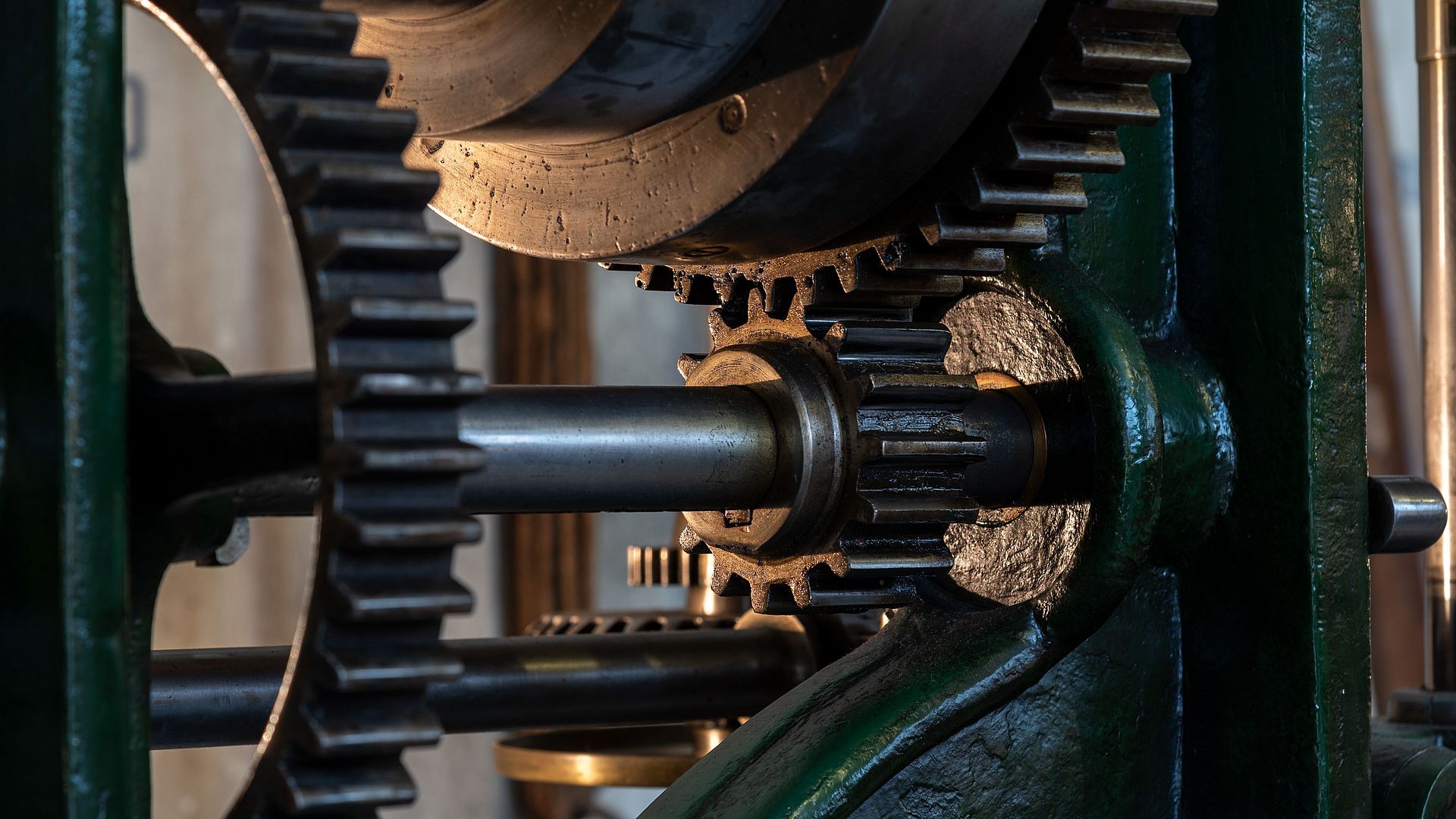
Photo: Deutsches Museum | Christian Illing
Materials, Energy, Production
Machine Tools – the Basis for Production
A journey through time, from the beginnings of machine tools to a computer-controlled production plant.
The production of consumer goods in large quantities is something we take for granted nowadays. Their manufacture is directly or indirectly connected to the use of both everyday tools and machine tools. Many development stages have taken place between the first hand-held tools – such as hand axes and fiddle drills – and the modern machine tools we know today.
In the 18th and 19th centuries, powerful lathes, drills and milling machines were developed. Only then did the universal use of metal as a material become possible. The new production methods and the steam engine brought about fundamental changes in the social structure and in day-to-day life. This period is known as the Industrial Revolution.
From the middle of the 20th century, a process introduced from the US – numerical control (NC) – caused a new paradigm shift: machines took over the operation of machinery, a task that had previously been carried out manually.
The exhibition presents the history of machine tools in three different halls, with the unique design and layout of each hall conveying a sense of the historical periods in question. Most of the exhibited machines are still in working order and can be demonstrated on request.
Exhibition Themes
An early mechanical workshop: the first exhibition hall recreates the atmosphere of a 19th-century workshop. Photo: Deutsches Museum | Christian Illing
Origins of Machine Tools
Wall paintings from around 1600 BC in Thebes (Egypt) show the first wooden tools for turning and drilling. Four dioramas in the first exhibition hall document a period of nearly 3,500 years and the development stages from those first tools to the mechanical workshops of the 19th century.
Lathes, planers, milling machines and gear-cutting machines from the 18th and 19th centuries are set up in a workshop of that time. The dim lighting and wooden floor recreate the historical ambience.
Please note: In the course of modernisation, the origins of machine tools area has been closed. We ask for your understanding.
Working conditions had changed considerably in the mechanical production shops of the 1950s and early 1960s. Individual motors replaced old belt drives and fluorescent tubes provided better lighting. The machines were also safer to operate, now that the previously open gearing was enclosed. Cam discs and mechanical profiling attachments were the first step towards automating production. Photo: Deutsches Museum | Christian Illing
Classic Machine Tools
The second hall is devoted to classic machine tools whose development was complete by 1930. Thereafter, no significant innovations occurred until 1945, when leather belt transmission belts became obsolete and were replaced by electric motors driving each machine individually. A sturdy construction damped out vibrations. The introduction of carbide and ceramic cutting materials made it possible to rapidly increase machining speeds and thus accelerate production. The colours, the tiled floor and the lighting help to recreate the historical atmosphere.
Modern Machine Tools
The style of machines changed again towards the end of the 20th century. The reason was the introduction of numerical control (NC) and the integration of computers into the machines. This era is documented in the third exhibition hall. Machining in closed production cells has since become ever more popular. A fully automated and computer-integrated production line illustrates the networking of the production processes, which increasingly require no human operators or supervision. Robots and conveyor belts take over the transport and handling of workpieces, thereby shortening the time between individual processing steps.
Inside the Machine Tools Exhibition
Facts
- 710 sqm exhibition area
- An exhibition at the Deutsches Museum since 1925, redesigned in 1990–1991
- The exhibition is on level 0
Any Questions?
![]()
Ralf Spicker
Curator
Department of metals, mechanical engineering and textile technologyDeutsches Museum
80306 MünchenTelephone +49 89 2179 506
Fax +49 89 2179 99350
Email r.spicker@deutsches-museum.de
Do you have organizational questions?
Cornelia Schubert
Assistance to department heads, main department heads and curators
Susanne Schmölz
Assistance to department heads, main department heads and curators

